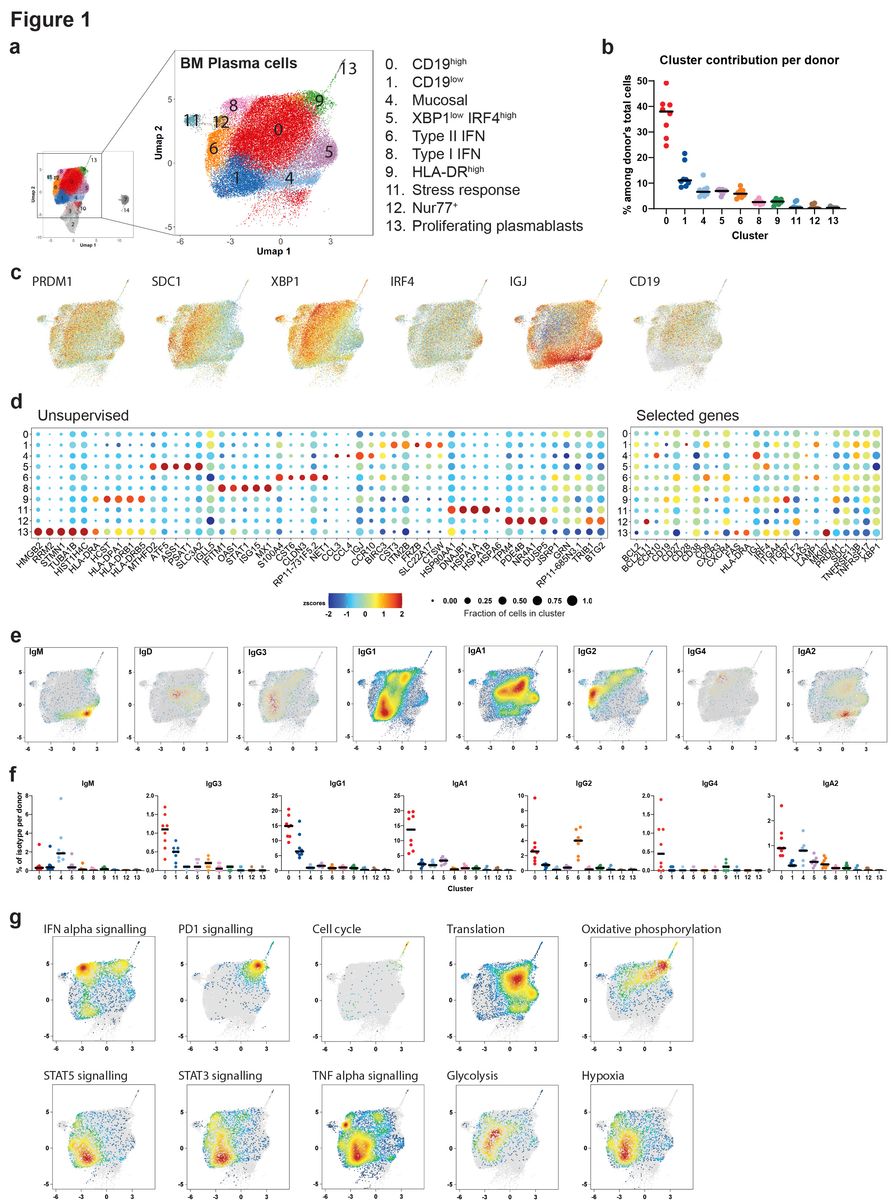Abstract
Bone marrow plasma cells (BMPC) emerge as a consequence of immune reactions and are considered the source of antibodies that protect against recurrent infectious diseases throughout life. Despite their importance, it remains unclear if these cells reflect different activation environments or the differentiation/maturation stages of their precursors. Here we track the recruitment of plasma cells, generated in primary and secondary immune reactions to SARS-CoV-2 spike protein vaccines, to the human bone marrow. Trajectories based on single cell transcriptomes and antigen-receptor clonotypes of antibody-secreting cells exiting the immune reaction and of those residing in the bone marrow, allow to follow the evolution of the immune response to these vaccines, leading to sequential colonization of these cells to different compartments (clans) of BMPC, and their establishment as long-lived (memory) plasma cells. In primary immune reactions, both CD19low (clans 1 and 4) and CD19high (clan 0) BMPC are generated. In secondary immune reactions, mostly CD19high BMPC of the largest compartment (clan 0) are generated, resulting from the reactivation of memory B lymphocytes. The latter is also observed in vaccinated convalescent individuals and upon recall vaccination against diphtheria/tetanus/pertussis (DTP). Thus, humoral immunological memory, i.e. serum antibodies secreted by long-lived memory BMPC, is generated already in the primary immune response, more so in the secondary, and it represents the evolution of the immune response.
Read whole article

